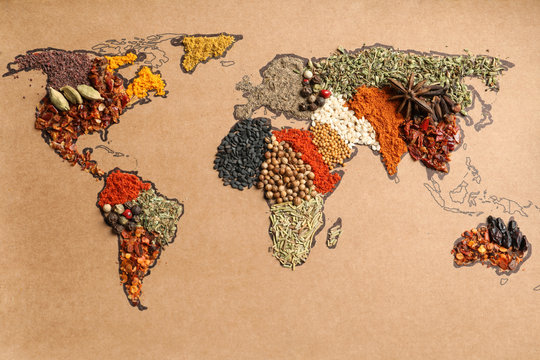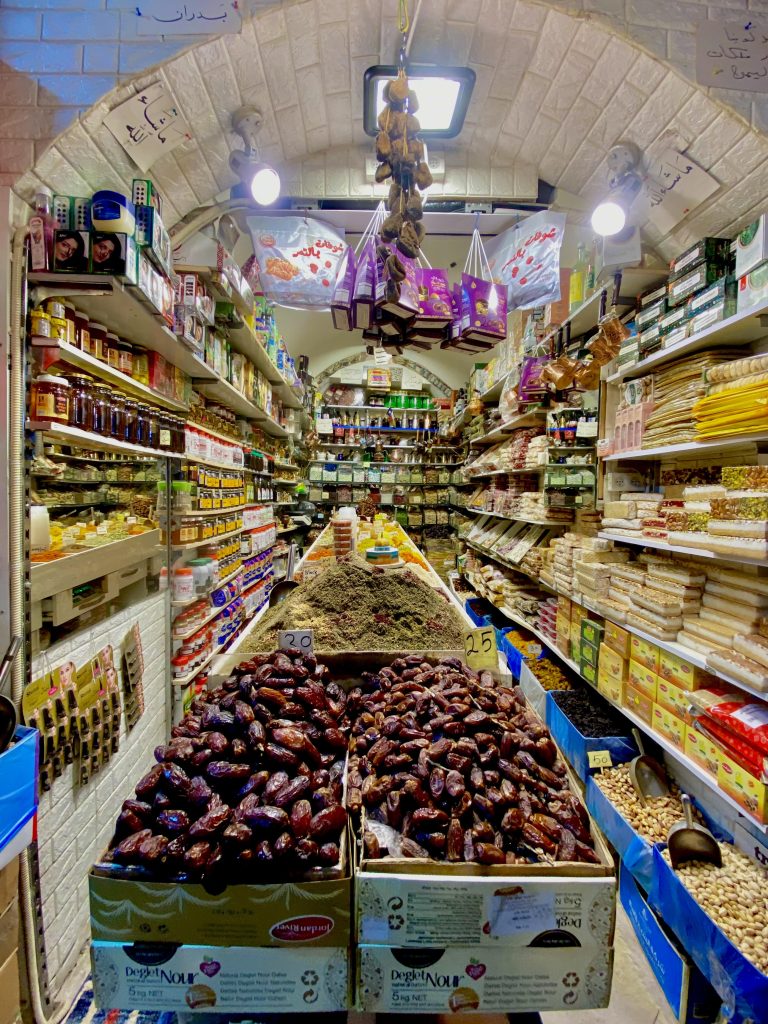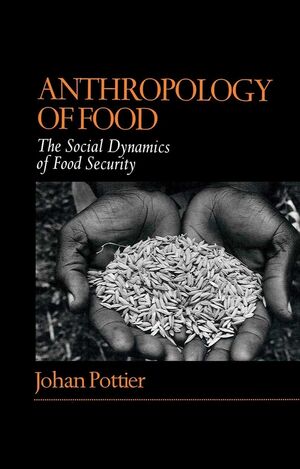
Background
The field of anthropology called “anthropology of food” combines historical and anthropological viewpoints with current social concerns in food systems of production and consumption. Although cooking and eating within ritual or everyday life were occasionally included in early anthropological reports, food was not usually the main subject of scholarly investigation until the second half of the 20th century. The study of food has become a critical window into contemporary social life thanks to the groundbreaking work of scholars like Sidney Mintz, Jack Goody, Marvin Harris, Mary Douglas, and Arjun Appadurai. With origins in the nineteenth century in the work of scholars such as Garrick Mallery and William Robertson Smith, the study of food and eating is significant not just for its own sake but also for its contributions to anthropological theory and research techniques. Scholars in this subject tackle fundamental concerns of identity, power, and social organization by providing a comprehensive picture of human civilizations by dissecting the dietary habits, beliefs, and rituals across cultures. Strong indicators of social standing, identity, belonging, and culinary practices are intricately entwined with rituals, customs, and ceremonies. They frequently reflect and reinforce social hierarchies within civilizations. As a result, food is not just a means of subsistence but also a dynamic cultural artifact that has significantly impacted human society. Through the perspective of food, the anthropology of food emerges as a dynamic topic that cuts across disciplinary boundaries and provides a comprehensive understanding of human cultures. Intimately entwined with rituals, conventions, and ceremonies, culinary practices are more than just discrete acts of nourishment; they are potent indicators of social standing, identity, and community belonging. Scholars in this field shed light on fundamental issues and practices among cultures, deepening our understanding of the human experience.
Terminology
Food traditions: These are the cultural customs and beliefs related to how food is made, shared, and enjoyed within a community.
Cooking Culture Studies: This field involves exploring food and culinary practices within the context of society. It delves into the economic and symbolic meanings of cuisine.
Survival Techniques: These are various approaches societies employ to acquire food, such as hunting, farming, herding animals, and modernized agriculture.
Plant-human Connections: This term refers to investigating the interactions between individuals and plants, especially how plants are utilized for sustenance, healing purposes, and other cultural uses across societies.
Dietary Restrictions: These are cultural rules governing what foods can be consumed due to beliefs, health concerns, or societal norms.
Community Food Autonomy: This concept relates to the ability of communities to manage their food processes – from production to distribution – in suitable and environmentally mindful ways.
Nutritional Stability: This involves ensuring that a society has food that’s accessible and affordable, often affected by factors like income disparity, farming methods, and political conditions.
Communal Dining: This refers to the custom of sharing meals, fostering connections and relationships within a group.
Global Food Trends: This term describes the expansion of food traditions, dishes, and culinary items beyond borders due to activities like trade, migration, and travel.
Traditional Ceremonies: These are events and customs surrounding food preparation, serving, and consumption that hold symbolic significance linked to religion, heritage, or societal structure.
Food Culture: This encompasses how individuals and communities express their identities through food choices, rituals, and cooking styles that influence collective self-perception.
Equitable Food Access: This involves advocating for the availability of culturally fitting food for all individuals to combat challenges like food insecurity, lack of access in certain areas, and inequalities in the food supply chain.
Nutritional Anthropology: This field explores habits from an anthropological viewpoint to understand the effects of food on physical health and overall wellness.
Cultural Fusion in Cuisine: This term describes the incorporation or adaptation of elements from one culture’s traditions into another culture’s cuisine, without recognizing or honoring the origins.
Food Preservation Techniques: Various methods have been employed by societies over time to prolong the freshness of food such as drying, salting, smoking, pickling, and canning.
Key thinkers
Anthropologists have studied food and how cultures eat since the 19th century.
Garrick Mallery’s paper Manners and Meals (1888) explored the relationship between food customs and social etiquette, revealing how culinary practices reflect cultural values and social hierarchies.
William Smith (1889) studied the rituals of commensality through Semite practices in building bonds between worshippers and God.
Later on, Audrey Richards, also regarded as the founder of nutritional anthropology, applied a functionalist analysis to understand the role of food exchange in maintaining social order and solidarity within the context of Northern Rhodesia (now Zambia) (e.g., Richards 1932; Richards 1939).
The French structuralist anthropologist Claude Levi-Strauss (1965) suggested that universal cognitive structures underlying human thought manifest in similar ways across different cultures. He famously used the concept of binary oppositions, such as “raw versus cooked,” to classify cultural practices and symbols.
Mary Douglas studied cultural meanings and symbolic dimensions of food in her work. Her book Purity and Danger (1966) delves into the cultural rules and taboos surrounding food consumption, demonstrating how food practices reflect social order and classification systems.
Marvin Harris (1985), which was associated with the school of cultural ecology, focused on how environmental factors, resources, and adaptation influenced human behaviors and societies, challenging the idea of universal patterns supported by Levi-Strauss and Structuralism. Harris focused on understanding how ecological factors shape cultural behaviors and practices, including dietary patterns, food taboos, and agricultural practices.
Sydney Mintz is known as the father of food anthropology. His book Sweetness and Power (1985) is regarded as one of the most influential publications in cultural anthropology and the subfield of anthropology of food. This work studied the production of sugar cooped with a cultural analysis of British sugar consumption. After the 1980s, there was an abundance of ethnographies of food that built on the foundations established by the previous authors.
Sutton (2001) and Farquhar (2002), among others, have proposed theories that connect the political-economic dimensions with the significance of food to the senses, memory, and the body.
Some relevant contemporary authors include Heather Paxson (2013), who has looked at American artisanal cheesemaking and how craftwork has gained importance both culturally and economically in American production and consumption, and Anne Meneley, who has studied food rituals, globalization, and the politics of food production and consumption, particularly in the Middle East (e.g. Meneley 2020).
Key ideas
Cultural Variation:
Like any aspect of society, food varies across cultures, giving rise to many different cuisines and food practices. This is partly due to “ecological restraints and opportunities which differ from one region to another” (Harris, 1998, p. 16). It is also due to cultural tradition. In her article, Cooper notes that “food preference and selection are not natural but instead must be learned,” therefore drawing the link between food and culture (Cooper, 2013, p. 96). Cuisines, defined as “the substances that societies choose and define as food and the ways that these foods are manipulated, processed, and consumed,” are shared among people within a culture (Cooper, 2013, p. 96). The family recipe exemplifies this. It is passed down throughout generations, serving as a “cultural text” (Cooper, 2013, p. 97). Food preferences serve to unite certain groups. For example, “India’s Hindus spurn beef, Jews and Muslims abominate pork, and Americans barely avoid wretching at the thought of dog stew” (Harris, 1998, p. 14). In contrast, Levi-Strauss demonstrates how cultural barriers can divide people by examining what people view as “rotten.” For example, during World War Two, there was a brief cultural clash between the American soldiers and the French when the Americans disposed of Norman cheese, which “seemed to them the smell of corpses” (Levi-Strauss, 1997, p. 41). In light of these arguments, it is clear that food can both bring people together and divide people apart.
With the rise of globalization, boundaries separating the culinary practices found across cultures have weakened. Phillips explores how globalization has heralded “the international circulation of food products as commodities” as well as “the transnational expansion of food corporations.” The extent to which food has become globalized is a relatively new development contrasted with the prior agricultural system composed of “relatively closed systems of production” (Phillips, 2006, p. 38). Trans-national food corporations disseminate different types of food across the globe, transcending cultural boundaries. Some claim that expanding global food chains, such as McDonald’s, “constitutes global imperialism,” as this destroys local food traditions (Phillips, 2006, p. 41). The Cousin’s study of the Bellah tribe illustrates the impact of globalization on food and cultural traditions. They revolutionized the Bellah’s food system by implementing a food bank and irrigation system, as well as adding vegetables to their diet. Through the Cousin’s influence, the Bellah’s diet and lifestyle changed.
Social Organization:
Since different foods vary in price and availability, the foods people eat are heavily tied to social class. As a result, food acts as a “signifier of class and social capital”, similar to fashion and material goods (Wright and Ransom, 2005, p. 310). Additionally, the way food is prepared can also signal class. Levi-Strauss argues that boiled food is seen as “plebeian,” while roasted food is seen as “aristocratic” (Levi-Strauss, 1997, p. 39). The connotations associated with boiling and roasting result from how these actions affect the food. Boiling food is an act of “economy” because it conserves the food and creates broth (Levi-Strauss, 1997, p. 43). In contrast, roasting food is more destructive and therefore signals “prodigality” (Levi-Strauss, 1997, p. 43). These connotations are culturally dependent, however. In Cree Native American culture, boiled food is viewed positively.
The food system also works to reinforce divisions between classes through the exploitation of the farmer workforce. Holme’s case study on the lives of indigenous Mexican farmers working on US soil demonstrates this point. The workers he follows are forced into “picking fruit bent over all day, every day, moving quickly, exposed to pesticides and the weather” in return for minimal wages in order to keep their families alive (Holmes, 2013, p. 67). The manufactured oppression of Mexican workers in the US artificially deflates wages in order to keep fruit and vegetable prices low for Americans. As a result, the American agricultural system reinforces the wealth gap between the US and Mexico.
In a similar vein, people’s eating habits signal gender norms and emphasize gender divisions. As Bourdieu claims, the traditional belief of men as “a sort of power, big and strong, with enormous, imperative, brutal needs” is reflected in the food men eat and how they eat it (Bourdieu, 1997, p. 35). Compared to women, men eat and drink more and even take second helpings. Men get to eat “the nourishing food” of meat, while women eat salad, a reflection of their authority (Bourdieu, 1997, p. 35). While eating, men assert a dominant position over their food. Bordiea’s findings demonstrate that eating practices reinforced the patriarchal gender norms of France during the 1960s.
Ritual and Symbolism:
The process of food is heavily ritualized. This is typified by dining etiquette, a set of rituals that define the socially acceptable way to eat food. For example, in Western culture, eating most foods with a fork, spoon, and knife is expected. However, this differs in other cultures, as Mallery found that the Malay culture “regards the use of a fork at a table as dirty and disagreeable” (Mallery, 1888, p. 198). In his study, Mallery demonstrates the intricacies of dining etiquette and ritual by explaining various rules that are commonly followed. For example, he mentions a rule that one should “touch the food to be eaten only with the right hand, but, if it was necessary to touch the food of others, as in helping, it should be done with the left hand, which remained unsoiled” (Mallery, 1888, p. 198). Arcane eating practices such as these serve to define in-groups and exclude out-groups, just as Mallery does when he claims other cultures are “savage” (Mallery, 1888, p. 193). Eating three meals a day, each with a “special character of food,” is another prominent eating ritual that impacts when and what people eat (Mallery, 1888, p. 196). While Mallery’s paper on the evolution of dining customs is elitist and, frankly, racist, it is a foundational piece of literature on the anthropology of food that reveals the importance of dining etiquette in all human societies.
Food itself is embedded with rich emotional meaning and can be used to signal positive or negative emotions. For example, food is often used as a punishment or reward by parents to their children. Rewards can take the form of “dessert, Sunday dinner, holiday fare, the rare treat,” while punishments take the form of the absence of a reward (Mead, 1997, p. 22). As a result, these delicious foods signal and symbolize a parent’s approval or “a symbol of a duty performed” (Mead, 1997, p. 22). Simple foods such as turkey and stuffing can take on a new character during the holidays. These foods may seem nostalgic, as they “suggest the past” (Mintz, 1997, p. 96). This feeling is reinforced through the ritual preparation of food during the holidays, as there is a “special effort to buy and prepare foods that take time, effort, and thought” (Mead, 1997, p. 19). The sheer amount of time people devote to cooking holiday foods demonstrates the intrinsic meaning people ascribe to them.
See also
For further reading on anthropology of food, Food and Culture: A Reader draws together a large collection of essays on the topic from various distinguished scholars. General topics addressed in the textbook include race, class, gender, embodiment, and globalization.




Images:
- Store in the souk or Arab Market, in the Old City of Jerusalem
- Cartoon by John Kron, who depicts everything Jewish.
- Sydney Mintz
- Cover of Johan Pottier’s Anthropology of Food: The Social Dynamics of Food Security.
References
- Appasurai, A. (1981). Gastro‐politics in Hindu South Asia. American Ethnologist, 8(3), 494–511. https://doi.org/10.1525/ae.1981.8.3.02a00050
- Barthes, R. (2018). Toward a psychosociology of contemporary food consumption*. Food and Culture, 13–20. https://doi.org/10.4324/9781315680347-2
- Belasco, W. (2002). Food nations: Selling taste in consumer societies. Psychology Press.
- Bourdieu, P. (1997). Distinction: A Social Critique of the Judgement of Taste. In Counihan, C., & Van Esterik, P. Food and culture: a reader. Routledge, 31-40. https://my.vanderbilt.edu/anth232/files/2014/08/Carole-Counihan-Penny-Van-Esterik-Food-and-Culture.-A-Reader-Routledge-2012.pdf.
- Cooper, E. E. (2013). Something to Sink Their Teeth Into: Teaching Culture Through Food. Transformations: The Journal of Inclusive Scholarship and Pedagogy, 23(2), 92–105. http://www.jstor.org/stable/10.5325/trajincschped.23.2.0092.
- Cooper, E. E. (1997). Why do we Overeat. In Counihan, C., & Van Esterik, P. Food and culture: a reader. Routledge, 19-22. https://my.vanderbilt.edu/anth232/files/2014/08/Carole-Counihan-Penny-Van-Esterik-Food-and-Culture.-A-Reader-Routledge-2012.pdf.
- Counihan, C. M. (2018). The Anthropology of Food and Body. https://doi.org/10.4324/9781315656540
- Counihan, C., & Van Esterik, P. (1997). Food and culture: a reader. Routledge. https://my.vanderbilt.edu/anth232/files/2014/08/Carole-Counihan-Penny-Van-Esterik-Food-and-Culture.-A-Reader-Routledge-2012.pdf.
- Cousin, J. (1998). Reports from Ti-n Akoff. The reports are unpublished, but copies are available from Solidarité Ti’n Akoff.
- Dart, J. (2017). Review : Food Consumption in Global Perspective: Essays in the anthropology of food in honour of Jack Goody, edited by Jakob A. Klein and Anne Murcott. Gastronomica, 17(3), 106–107. https://doi.org/10.1525/gfc.2017.17.3.106
- Farquhar, J. (2002). Appetites: Food and Sex in Post-Socialist China. Durham: Duke University Press.
- Goodman, M. K., & Sage, C. (2016). Food transgressions. Food Transgressions, 1–14. https://doi.org/10.4324/9781315582702-1
- Grasseni, C. (2007). Skilled visions: Between apprenticeship and standards. Berghahn Books.
- Harris, M. (1998). Good to eat: Riddles of food and culture. Waveland Press.
- Holmes, S. M. (2013). Fresh Fruit, Broken Bodies: Migrant Farmworkers in the United States (1st ed.). University of California Press. http://www.jstor.org/stable/10.1525/j.ctt7zw45x.
- Holtzman, J. D. (2006). Food and memory. Annual Review of Anthropology, 35(1), 361–378. https://doi.org/10.1146/annurev.anthro.35.081705.123220
- Klein, J. A. (1970, January 1). Introduction: Cooking, cuisine and class and the Anthropology of Food. SpringerLink. https://link.springer.com/chapter/10.1057/9781137326416_1
- Krohn, J. (2014). Dude, why are you kosher and I’m not. Retrieved from https://blogs.timesofisrael.com/dude-why-are-you-kosher-and-im-not/
- Lalonde, M. P. (1992). Deciphering a meal again, or the anthropology of taste. Social Science Information, 31(1), 69–86. https://doi.org/10.1177/053901892031001003
- LB, S., MEPE, G., & GB, N. (2018, November 30). Open access journals: Peer reviewed journals. Prime Scholars. https://www.primescholars.com/articles/anthropology-of-food-an-essay-on-foodtransition-and-transformations-in-brazil-94075.html
- Lentz, C. (1991). Changing Food Habits: An introduction. Food and Foodways, 5(1), 1–13. https://doi.org/10.1080/07409710.1991.9961988
- Lévi-Strauss, C. (1997). The Culinary Triangle. Food and culture a reader. In Counihan, C., & Van Esterik, P. Food and culture: a reader. Routledge, 19-22. https://my.vanderbilt.edu/anth232/files/2014/08/Carole-Counihan-Penny-Van-Esterik-Food-and-Culture.-A-Reader-Routledge-2012.pdf.
- Lévi-Strauss, C. (1965). The future of kinship studies. Proceedings of the Royal Anthropological Institute of Great Britain and Ireland, (1965), 13-22.
- Mallery, G. (1888). Manners and meals. American Anthropologist, 1(3), 193-208.
- Meneley, Anne. 2020. “The Olive and Imaginaries of the Mediterranean.” History and Anthropology 31 (1): 66–83. https://doi.org/10.1080/02757206.2019.1687464.
- Mintz, Sidney W., & Bois, C. M. D. (2002, October 1). The anthropology of food and eating. Annual Review of Anthropology.
- Mintz, S. W. (1997). Time, Sugar, and Sweetness. In Counihan, C., & Van Esterik, P. Food and culture: a reader. Routledge, 96-103. https://my.vanderbilt.edu/anth232/files/2014/08/Carole-Counihan-Penny-Van-Esterik-Food-and-Culture.-A-Reader-Routledge-2012.pdf.https://www.annualreviews.org/content/journals/10.1146/annurev.anthro.32.032702.131011
- Mintz, Sidney Wilfred. (1986). Sweetness and power: The place of sugar in modern history. Penguin Books.
- New Africa. (n.d). World Map Spices, Herbs, Condiments. Retrieved from https://stock.adobe.com/images/paper-with-world-map-made-of-different-aromatic-spices-as-background-top-view/232384797?prev_url=detail
- New York Times. (2015, December 29). Sidney Mintz, Father of Food Anthropology, Dies at 93. Retrieved from https://www.nytimes.com/2015/12/30/us/sidney-mintz-father-of-food-anthropology-dies-at-93.html
- Nonini, D. (2013). The local‐food movement and the Anthropology of Global Systems – Nonini – 2013 – american ethnologist – wiley online library. The local-food movement and the anthropology of global systems. https://anthrosource.onlinelibrary.wiley.com/doi/abs/10.1111/amet.12019
- Oni, F. E. & Baiyegunhi, L. (2022). Scholastic Review of Food, Memory, and Identity: Classical Migrant Experience. In M. Arafat, I. Saleem, J. Ali, A. Khan, & H. Balhareth (Eds.), Driving Factors for Venture Creation and Success in Agricultural Entrepreneurship (pp. 60-81). IGI Global. https://doi.org/10.4018/978-1-6684-2349-3.ch003
- Paxson, Heather. 2013. The Life of Cheese : Crafting Food and Value in America. 1st ed. Vol. 41. Berkeley: University of California Press.
- Phillips, L. (2006, October 21). Food and globalization. Annual Review of Anthropology. https://www.annualreviews.org/doi/abs/10.1146/annurev.anthro.35.081705.123214
- Pottier, Johan. 1999. Anthropology of Food : the Social Dynamics of Food Security. Cambridge, UK : Oxford ; Malden, MA: Polity Press ; Blackwell Publishers.
- Richards, A. (1932) Hunger and work in a savage tribe: a functional study of nutrition among the Southern Bantu. London: Routledge & Kegan Paul.
- Richards, A. (1939) Land, Labour, and Diet in Northern Rhodesia: and economic study of the Bemba tribe. Oxford: Oxford University Press.
- Smith, W. (2017). Religion of the Semites: The Fundamental Institutions. Routledge.
- Somaiah, B. C. (2010, January 1). Carole Counihan and Penny Van Esterik (eds.) (2008) food and culture: A reader. second edition. Asian Journal of Social Science. https://www.academia.edu/37166486/Carole_Counihan_and_Penny_Van_Esterik_eds_2008_Food_and_Culture_A_Reader_Second_Edition
- Souisa, N. N. (2019, January 1). Sharing meal, sharing life together: An anthropological perspective on the significance of sharing meal ritual based on the religious life. Atlantis Press. https://www.atlantis-press.com/proceedings/icrpc-18/55912125
- Stinson, S. (1992, October 1). Nutritional adaptation, Annual Review of Anthropology. DeepDyve. https://www.deepdyve.com/lp/annual-reviews/nutritional-adaptation-te6M2W0i2a
- Sutton, D. (2001). Remembrance of repasts. https://www.bloomsbury.com/uk/remembrance-of-repasts-9781859734742/
- Sutton, D. E. (2010). Food and the Senses. Annual Review of Anthropology, 39(1), 209–223. https://doi.org/10.1146/annurev.anthro.012809.104957
- Visser, M. (1999, January 1). Margaret Visser, food and culture: Interconnections. PhilPapers. https://philpapers.org/rec/VISFAC
- Watts, S. (2008). Massimo Montanari. food is culture. New York, NY: Columbia University Press, 2006. XII + 149 pp. ISBN 0-231-13790-7, $22.50 (hardcover). Enterprise and Society, 9(2), 368–370. https://doi.org/10.1093/es/khn039
- Wiley, A. (2012). Human biology eats: Contemporary research and future … Human biology eats: Contemporary research and future directions. https://onlinelibrary.wiley.com/doi/abs/10.1002/ajhb.22232
- Wright, W. & Ransom, E. (2005). Stratification on the Menu: Using Restaurant Menus to Examine Social Class. Teaching Sociology, 33(3), 310–316. http://www.jstor.org/stable/4127594.
- Wutich, A., & Brewis, A. (2014). Food, water, and scarcity. Current Anthropology, 55(4), 444–468. https://doi.org/10.1086/677311